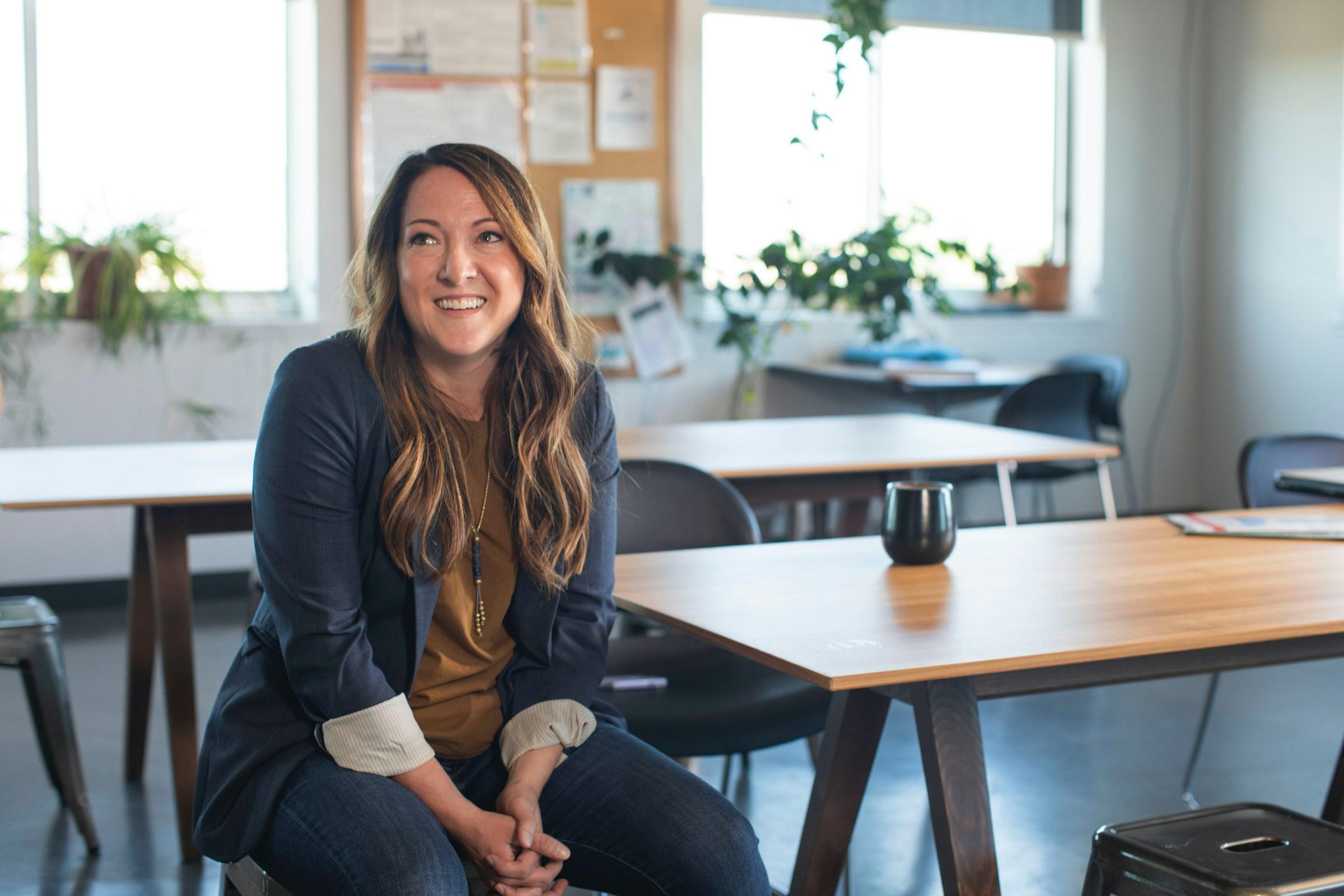Ambidexterity arrives with a promise of fluidity. You picture yourself switching a spatula from one hand to the other while the kettle sings, writing a note as the cat curls against your elbow, then opening jars and doors with equal ease. The dream is symmetry. In real life, the body tells a quieter story. Hands learn through repetition and context. Tools and spaces are designed with assumptions baked in. The brain favors lanes because lanes are efficient. The romance of equal skill on both sides sometimes meets the friction of a world arranged to pick a side.
One of the first places the shine fades is learning speed. When you teach both hands the same job, the brain must encode two versions of the same pattern instead of deepening one. Think of pouring latte art in your kitchen. If you practice mostly with your dominant hand, the motion becomes a single, smooth arc that your muscles call up without discussion. If you alternate, you often keep both sides in the early stages of skill, where attention is heavy and confidence is thin. You become a lifelong beginner, which can be charming until a guest is waiting for coffee and the milk has already cooled.
This logic shows up in handwriting. The hand that writes daily learns micro-timing and pressure that no pen tutorial can give you. Switch hands and you may keep your ideas, but lose your pace and legibility. For students and note-heavy professionals, that cost is not romantic at all. It looks like messy lecture notes, slower exam answers, and a mind that races ahead while the hand is still framing letters. If your life is built on paper trails and quick annotations on the fridge, that mismatch becomes a daily tax.
There is also the matter of choice fatigue. If both hands can do a task, you introduce a small decision at every turn. Which side should hold the knife when chopping daikon. Which hand leads when you sweep the floor around the dining table. Which wrist carries the grocery tote so the other stays free for your phone or keys. These micros decisions are invisible until your day stacks them up. By evening, your willpower feels nibbled away by tiny selections that never needed to exist. A right-leaning world quietly saves you from those choices by narrowing your lane. Ambidexterity keeps the lane open, which sounds like freedom but can read as noise.
Tools reveal the next layer. Most scissors, can openers, vegetable peelers, guitar fretboards, and camera grips are not truly neutral. They privilege a side through blade bias, handle contour, or control layout. When you live as an ambidextrous user, you trade convenience for awareness. You either keep duplicates made for each side, or you accommodate awkward angles. In a small kitchen or studio, that means clutter or compromise. A drawer with two peelers takes space from the spare tea strainers. A left-biased camera body asks you to retrain your reach for a lens cap in the middle of a shoot. Your home becomes a negotiation, which is interesting when you are curating, and exhausting when you just want to get dinner on the table.
The body adds its own caution. Balanced training sounds protective until you discover that equal workload does not always equal equal resilience. Most of us have subtle asymmetries in bone torsion, tendon glide, and joint stability. The side you think you are elevating may actually complain more because it lacks the quiet architectural advantages of your dominant limb. You can overuse both sides in different ways. That might show up as bilateral wrist tightness from split-duty typing or as shoulder irritation from switching your heavy market bag every block. Instead of one tired side, you collect two moderately strained ones, which can be harder to rest because you no longer have a safe fallback.
In sports and craft, specialization exists for a reason. A violin expects a strong left-hand fingerboard and a right-hand bow arm that learns subtle pressure over years. Tennis rewards the confidence of a forehand you can drive without negotiation. Even yoga balances are taught with a leading side in mind, not to revere dominance, but to respect the nervous system’s love of anchors. Ambidexterity dilutes that anchor if you chase symmetry as a goal instead of treating it as a gentle expansion. You might become decently capable with both hands and never truly powerful with either, which matters if your work or joy lives in performance.
Cognition threads through all of this. The developing brain tends to lateralize functions because separation reduces crosstalk. The popular story says that a more bilateral brain is more creative. The quieter truth is that diffusion can be costly when tasks must be fast, automatic, and precise. If everyday life already demands that you juggle tabs, children’s schedules, and a rickety clothes horse on the balcony, you may prefer fewer internal negotiations, not more. The mind reaches for grooves it can trust. When both sides are always invited to audition, you sometimes keep the soundtrack in rehearsal.
Identity sneaks in as well. We think of handedness as a neutral label, but routines bond with a side. You cradle a mug in a specific hand when you greet the morning light. You lock your front door with a small twist you learned on move-in day. You toss a towel over a shoulder that knows the weight of it. When you force a switch, the ritual can lose its anchor and the day can feel unbuttoned. That does not mean you should never alternate. It means that consistency carries a mood and a sense of self that is worth honoring. In a home designed to calm you after a fast city, the psychological benefit of stable motions is not trivial. It is a kind of grace.
There are social frictions too. Shared spaces are arranged by majority habits. Offices set up hot desks with mice and number pads on the right. Cafés place card readers to the right of the pastry case. Friends pass serving spoons clockwise because most hands will find that smooth. Choosing the other hand is not wrong. It just inserts a pause that looks like hesitation. Over a day, those pauses collect like lint. You can ignore them when your energy is high. On a tired evening, you may want the world to meet you halfway and it often does not.
Even safety can be affected. In kitchens and workshops, reflex paths matter. If your brain is not sure which hand owns the emergency action, the first second of response can be mush. The pot tips, the oil spits, the drill binds, and your body runs a micro poll on which hand to use. In those moments, trained dominance is a kindness. It is the speed that keeps a small mistake from becoming a big one. You can absolutely rehearse emergencies with both sides to tighten the loop, but that is the point: you will need to rehearse twice.
None of this is an argument against play. There is joy in brushing your teeth with the other hand, not because it unlocks genius, but because it wakes up attention. There is value in distributing work across your body when typing all day or hauling compost to your balcony planters. There is beauty in teaching your off hand to stir a risotto while your phone rings and your child asks for water. That is not the same as declaring both hands equal in all things. The difference sits in intention. Use ambidexterity as seasoning, not the recipe.
Design choices can soften the edges. A truly neutral setup in the kitchen keeps knives, boards, and towels accessible from both sides of the prep zone. A desk with a center-mounted monitor and a wireless mouse that glides well on either side removes a pinch point without announcing a philosophy. Hooks for bags near both sides of the entry let you switch the shoulder you load without inventing a new ritual. These are small edits that honor comfort without creating clutter. The aim is not to build a museum of mirrored tools. The aim is to keep your flow unbroken.
It helps to choose domains. Let your dominant hand own the tasks that require speed, safety, or signature quality. Let the supporting hand carry kettles, hold bowls, steady cutting boards, water plants, and flip laundry, so your main side gets gentle rest. That split respects the body’s history while still sharing the load. You are not erasing difference. You are making it work for you. When a day asks for more from the weaker side, treat it like training, not a test. Warm up with lighter jobs. Give it a win before the harder motion. End with your stronger side completing the finale so your nervous system ends the session feeling safe.
If you are teaching a child to explore both hands, the same kindness applies. Let play lead. Offer crayons on both sides of the paper. Place a ball in the middle of the mat. Notice what their body reaches for naturally and celebrate the pattern that emerges. The goal is not to manufacture symmetry. The goal is to let coordination grow where curiosity leads. We spend so much time trying to optimize children that we forget how much the brain loves to pick anchors on its own. That anchor is not a limit. It is a foundation.
At home, the softest approach is to pair ambidexterity with ritual rather than with ambition. Alternate which hand waters the herbs on the windowsill while keeping your favorite mug in the hand that feels like morning. Switch hands for slow tasks that happen after dinner when no one is waiting. Keep your signature motions untouched for work that carries your name or your safety. This balance protects delight without taxing your attention. It is also sustainable. The best habits are the ones you can repeat without thinking, and the most nourishing homes are the ones that understand how you move when you are not performing.
There is a final, practical truth that rarely gets airtime in the glow of novelty. The disadvantages of ambidexterity are not dramatic; they are cumulative. They are seconds stolen by decisions that never had to exist. They are drawers that carry duplicates and rooms that carry a little extra fuss. They are bodies that work a bit harder to be equally okay instead of beautifully fluent. If you love the experiment, keep some of it. If you crave calm, let your everyday rituals choose a side and breathe easier.
Symmetry is pretty on paper. In a lived-in space, fluency is prettier. Choose the hand that keeps your soup silky and your notes legible. Teach the other to help. Let your layout be kind. A home does not judge how you stir, sweep, or sign. It simply reflects the rhythm you repeat. When that rhythm is stable, life feels lighter, and your attention returns to what actually matters, which is the meal still warm on the table and the people who came to share it.
To hold the nuance clearly is to accept that the disadvantages of ambidexterity are not failures. They are signals that our bodies and spaces like anchors. When we listen, design becomes softer, and daily life stops feeling like a series of small auditions. The goal was never to be equal in all things. The goal is to move through your day with ease. Choose rhythm over performance. Choose fluency over novelty. Let your home learn you, and let your hands keep their favorite jobs.














